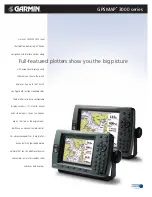
LEA-5, NEO-5, TIM-5H - Hardware Integration Manual
GPS.G5-MS5-09027-A2
Released
Design-in
Page 46 of 68
2.7
EOS/ESD/EMI Precautions
When integrating GPS receivers into wireless systems, careful consideration must be given to electromagnetic
and voltage susceptibility issues. Wireless systems include components which can produce Electrostatic Discharge
(ESD), Electrical Overstress (EOS) and Electro-Magnetic Interference (EMI). CMOS devices are more sensitive to
such influences because their failure mechanism is defined by the applied voltage, whereas bipolar
semiconductors are more susceptible to thermal overstress. The following design guidelines are provided to help
in designing robust yet cost effective solutions.
To avoid overstress damage during production or in the field it is essential to observe strict
EOS/ESD/EMI handling and protection measures.
To prevent overstress damage at the RF_IN of your receiver, never exceed the maximum input
power of –5dBm.
2.7.1
Abbreviations
Abbreviation
Definition
ANSI
American National Standards Institute
CDMA
Code Division Multiple Access
EMC
Electromagnetic compatibility
EMI
Electromagnetic interference
EOS
Electrical Overstress
EPA
Electrostatic Protective Area
ESD
Electrostatic discharge
GND
Ground
GPS
Global Positioning System
GSM
Global System for Mobile Communications
IEC
International Electrotechnical Commission
PCB
Printed circuit board
Table 13: Explanation of abbreviations used in this section
2.7.2
Electrostatic discharge (ESD)
Electrostatic discharge (ESD) is the sudden and momentary electric current that flows between
two objects at different electrical potentials caused by direct contact or induced by an
electrostatic field. The term is usually used in the electronics and other industries to describe
momentary unwanted currents that may cause damage to electronic equipment.
2.7.3
ESD protection measures
GPS receivers are sensitive to Electrostatic Discharge (ESD). Special precautions are required
when handling.
Most defects caused by ESD can be prevented by following strict ESD protection rules for production and
handling. When implementing passive antenna patches or external antenna connection points, then additional
ESD measures as shown in Figure 38 can also avoid failures in the field.
















































